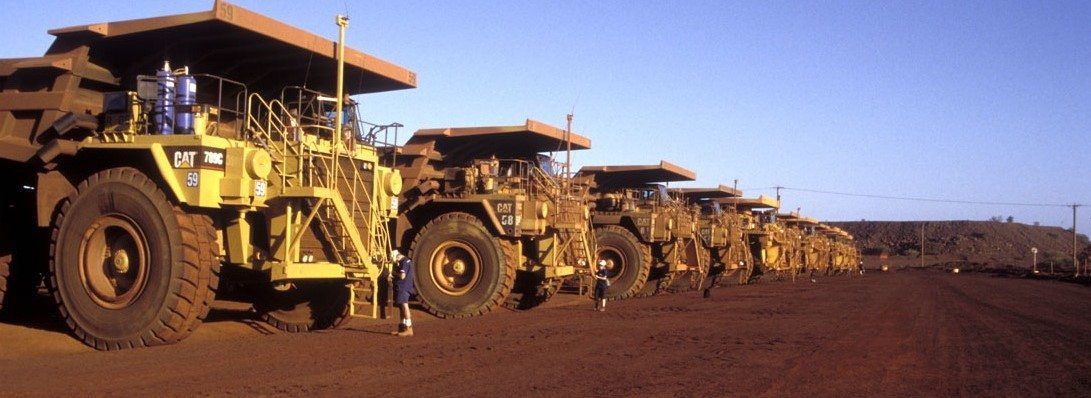What’s driving a 400 tonne dump truck got to do with a travel blog you might ask? Probably not much, except that it’s a part of my life journey that began with a leap of faith and an eleven day drive half way around Australia.
I had hitched a ride when my car broke down in Cape York and the man who gave me a ride told me he worked in the mines at Pannawonica. I said “Panna what? Can you spell that for me?” and then “Where is it and how can I get work there?” I posted my resume to the mine supervisor and he said I’d have to be on site to get a job. So I jumped in my car and drove for eleven straight days in the hope of getting work. The following paragraphs are taken from my journal after I arrived.
I drove back to Karratha for a barrage of fitness, strength, hearing, eye, drug and spirometer tests and induction on Thursday and came out sporting a shiny new uniform of steel capped boots, navy work pants and shirts (both long!!!!) with silver reflective tape, bright yellow helmet, safety glasses, a belt and socks.
I got up at 0500 to start work. It was still very dark outside at 0530 as I made my way through the streets towards the bus stop. Pairs of dark figures waited at the bus stops in each street, chatting quietly.
I’m feeling a small measure tired, a medium measure of excitement and a big measure of scared.
The little town is a hive of activity, with enough people to almost fill a small bus and a big bus, waiting along the streets and several mine vehicles, with flashing roof lights and orange flags making their way out to the day shift.
Is the uniform of reflective shirts so that the bus can find us all in the dark? I felt a momentary lapse in my sense of night and day. Is it night shift or day shift? The bus is subdued and smells of coffee and vegemite toast as people climb aboard, brekkie-on-the-run in hand, standard issue green canvas crib bags over one shoulder, safety glasses on heads and standard issue insulated coffee mugs in one hand.
It’s about ten or 15 minutes bus ride to the mine and as we dip down into the melaleuca-lined causeway, the horizon starts to turn red below the half moon and bright planet. Through the boom-gate, round the corner and there they are…. ten or twelve bloody enormous trucks, just visible, standing side by side in the first light of dawn.
I was assigned a trainer Len (not his real name) to take me out in the truck. We walked along the windrow, bags over our shoulders, coffee mugs in hand, hard hats and glasses on, with the other ten or so drivers, then turned in towards our rig #62, a Komatsu 730E. The battery isolation procedures mean we had to attach the scissor lock, master lock and our two personal locks, along with the three tags, to the isolation point and check that the truck wouldn’t start, before doing the pre-drive walk-around check. The tyres ($25,000 each) (they rose to $150,000 each a couple of years later) are about twice as tall as I am. We walked around and under as Len pointed out all the bolts, welds, belts and tanks and joins that need to be checked each morning (and night).
We unlock our respective locks and tags and climb up about 23 steps to the deck, which must be seven metres wide at least, to continue checks of oil levels, two more fire extinguishers, more bolts and the two enormous blue foam-filled fire-suppression system tanks. We both climb into the cabin, perched in the far left-hand corner of the deck, under the mighty tip tray and roomier than the front seats of a standard 4WD, where we (Len) perform another series of tests and checks and fill out the daily test sheet with about 30 boxes to tick off.
Then we complete another set of compulsory pre-activity safety check-lists, give one blast on the horn to announce that the ignition key will be turned, two blasts on the horn to announce that we’re moving forward and we lurch forward out of the spoon-drain, test three sets of brakes, adjust the already-babbling 2-way and thunder slowly out of the laydown and up the first hill to the five square kilometre open-cut iron-ore mine as the sun illuminates the spectacular Pilbara landscape.
6,310 tons of iron ore, 36 loads and 88.5 kms later, the sun went down over the Pilbara in a glorious haze of red dust and our twelve hour shift ended. It’s just so much more beautiful here than I could have imagined, especially in ‘winter’. Small melaleucas or Kunzeas are starting to flower and the stunning crimson and black Sturt Desert Peas are all but finished. They’re covered now with a mass of seed pods. How I love moving and travelling and discovering new places.








I cannot imagine driving one of these enormous trucks. I have heard that women actually make better drivers because they are more careful. That would be one tough life if you had to do it for long.
Leigh recently posted…7 Things To Do in Fundy National Park, New Brunswick
Hi Leigh,
Thanks for your comment. It’s scary at first, but like anything new, it quickly becomes second nature to drive the trucks. Yes, the lifestyle can be pretty tough. The hours are very long. Every third week I worked 72 hours and every other week was 48 hours (12 hour shifts, always half days, half nights), right through the year. I was getting up at 0400 to go to the gym because I had to do something other than sit (for a fitness junkie that was the hardest thing). Sleeping through the day (or trying, in my case) is unnatural and unhealthy. But driving those monsters is actually great fun.
If you are in construction you know that you will find a lots of recourses that happen to be total junk, fortunately your site is simply not one of those websites, i really like your content very much, continue the great job
Thanks, I’m glad you’re finding some value in my site.
I couldn�t refrain from commenting. Perfectly written!
Thank you. I appreciate your comment.
I thoroughly enjoyed reading this post
Thank you, Swango.
Thank you, Penny. I really appreciate your kind comment.
Thanks for your lovely comment, Melia. I appreciate your visit to my site and I hope you return and continue to enjoy the posts.
Jane
I work at a company that makes giant fabric buildings that are sometimes used as maintenance buildings for these mining trucks. However, I’ve never seen one of these heavy haul trucks in person. Very nice story and photos. Thank you.
Alaska Structures recently posted…How Pipeline Enclosures Reduce Loss, Protect Assets
Thanks for your comment Rory. I’m glad you enjoyed my story.